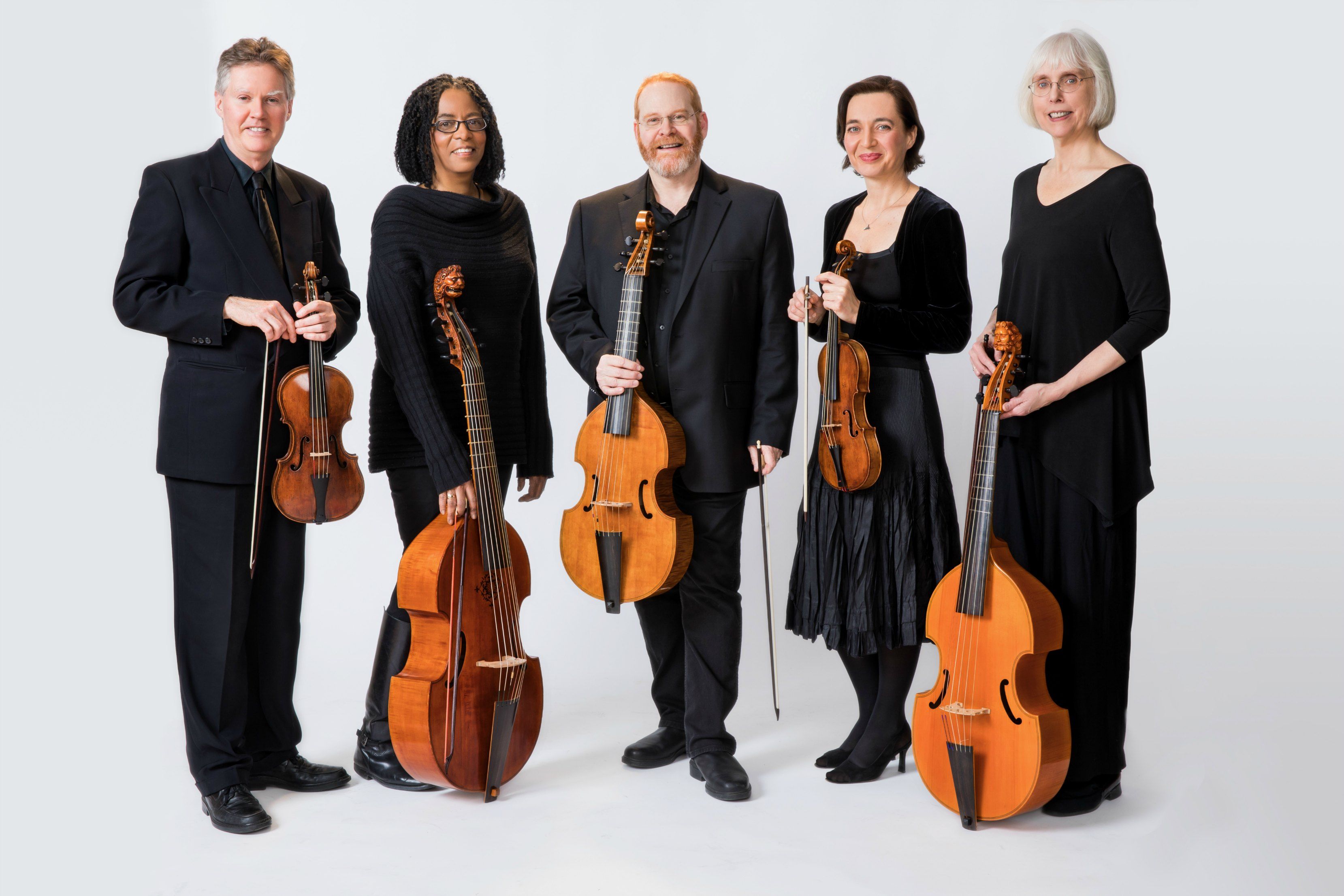 William White is one of the least well-known composers in Jacobean England. He is believed to be a contemporary of Byrd, Gibbons, Tomkins, Ford, Coprario, etc. His fantasies are characterized by a brilliant ability to pair two instruments together in featured sections and weaving a tasteful and spirited tapestry of melody throughout.
William White is one of the least well-known composers in Jacobean England. He is believed to be a contemporary of Byrd, Gibbons, Tomkins, Ford, Coprario, etc. His fantasies are characterized by a brilliant ability to pair two instruments together in featured sections and weaving a tasteful and spirited tapestry of melody throughout.
Judson Griffin, baroque violin
Małgorzata Ziemnicka, baroque violin
Lawrence Lipnik, viola da gamba
Carlene Stober, viola da gamba
Patricia Ann Neely, viola da gamba
Rosamund Morley, viola da gamba
Abendmusik – New York’s Early Music String Band, explores the entire spectrum of string repertory composed in the renaissance and baroque periods and encompassing the 16th and 17th centuries on period instruments. We present programs that focus feature composers who flourished on the continent of western and eastern Europe as well as the British Isles.
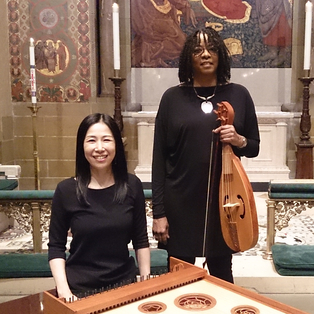
Patricia-Ann Neely, vielle
This concert explores sacred and secular music in France, Germany, and Italy in the fourteenth and the fifteenth centuries. The repertoire includes a wide range of repertoire of instrumental works, such as French and Italian music from Codex Faenza 117, French estampies, and Italian salterello.
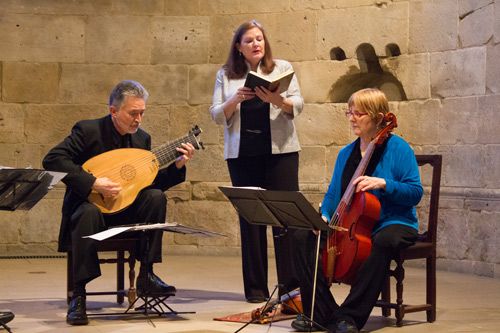 Seventeenth-century Italy saw the blossoming of educational opportunities for women, as well as an increase in their intellectually creative activities. Not all girls trained in musical composition became nuns, but the life of an upper-class nun afforded a woman the leisure to learn and pursue music at the same level as her fathers and brothers outside the convent walls.
Seventeenth-century Italy saw the blossoming of educational opportunities for women, as well as an increase in their intellectually creative activities. Not all girls trained in musical composition became nuns, but the life of an upper-class nun afforded a woman the leisure to learn and pursue music at the same level as her fathers and brothers outside the convent walls.
Sarah Pillow, soprano; Mary Anne Ballard, viola da gamba; Special guest: John Austin Clark, harpsichord
Read more: March 16, 2017 Galileo's Daughters - Sacred Women
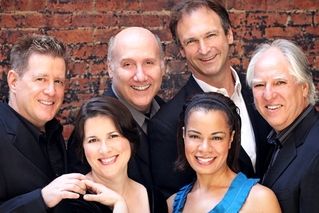
Composer Orlando di Lasso was kidnapped three times as a child because of his beautiful voice. Known as turbulent artist of swiftly changing moods, this program reflects a variety of his works including Italian madrigals, French chansons, German lieder, and Latin motets.
Linda Lee Jones, Michele Kennedy, sopranos
William Zukof, countertenor
Todd Frizzell, David Vanderwal, tenors
Peter Walker, bass
Read more: November 17, 2016 The Western Wind - The Divine Orlando: Music of Orlando di Lasso

Sian Ricketts, soprano & recorders
Tracy Cowart, mezzo-soprano & percussion
David McCormick, vielle
Niccolo Seligmann, vielle & percussion
Long before iPods, these the trouvères of Northern France penned the music they wanted to hear and share. Their songs of public and private adoration wove together allusions both sacred and secular– creating mystical and spicy meditations on love and longing. Alkemie has reconstructed much of this program from medieval manuscripts – bringing new life to an art form with strong oral and improvisatory traditions.

Malachai Bandy - viola da gamba
Eva Lymenstull - viola da gamba
William Trafka - organ
with guest Jonathan May - countertenor
The nineteenth season of the Midtown Concerts closes with a very special program, St. Bart's Director of Music, William Trafka, Grammy-nominated British countertenor Ryland Angel, members of the Queens Baroque Ensemble, and special guest countertenor, Jonathan May. These immensely talented musicians have put together a program focusing on the Marian theme, the love between mother and child, featuring works by composers Johannes Schenck, J.S. Bach, Scarlatti, and Buxtehude.
 The ladies of Sonnambula take on the three-part viol repertoire in this program to feature the unique sound of viols, alone. From the soloistic bass writing of Marais in seventeenth-century France, to offshoots in Germany and in Reformation England, we explore some of the most supreme repertoire for the viol while indulging in its glorious sonorities.
The ladies of Sonnambula take on the three-part viol repertoire in this program to feature the unique sound of viols, alone. From the soloistic bass writing of Marais in seventeenth-century France, to offshoots in Germany and in Reformation England, we explore some of the most supreme repertoire for the viol while indulging in its glorious sonorities.
Elizabeth Weinfield, Viola da Gamba
Amy Domingues, Viola da Gamba
Shirley Hunt, Viola da Gamba
Read more: June 22, 2017 Sonnambula - Musique à Trois: Works for Viols Alone
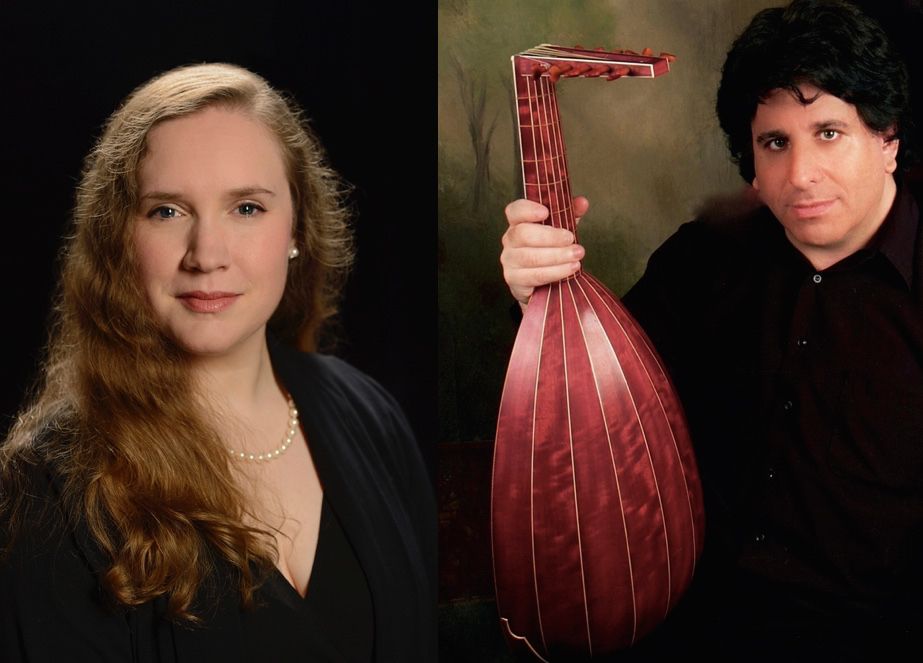 This program includes lute songs by some of the most important composers of the Elizabethan era: John Dowland, Thomas Campion, Robert Jones, Philip Rosetter, and Thomas Morley. Represented here are some of the main themes that run throughout English song during this period, from celebration of spring and the country life to characters from Greek myth, and from melancholy to hidden code to the complexities of love. Matthew Weinman will play his gut strung lutes upon a table, implementing a Renaissance performance practice seldom used today.
This program includes lute songs by some of the most important composers of the Elizabethan era: John Dowland, Thomas Campion, Robert Jones, Philip Rosetter, and Thomas Morley. Represented here are some of the main themes that run throughout English song during this period, from celebration of spring and the country life to characters from Greek myth, and from melancholy to hidden code to the complexities of love. Matthew Weinman will play his gut strung lutes upon a table, implementing a Renaissance performance practice seldom used today.
Abigail Chapman, soprano
Matthew Weinman, Renaissance Lute
For more on the artists, please visit their respective websites:
www.mwlutemusic.com
www.abigailchapman.com
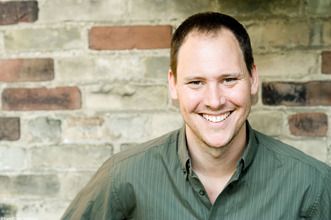 This programme will recreate a salon presentation of late 17th- and early 18th-century English songs, as they would have been commonly heard at the time, with the singer providing his own accompaniment at the Italian virginal. Composers Henry Purcell, John Blow, John Eccles, and others published in the Playford books will be represented, interspersed with selections from The Dancing Master, and readings from Samuel Pepys and his contemporaries.
This programme will recreate a salon presentation of late 17th- and early 18th-century English songs, as they would have been commonly heard at the time, with the singer providing his own accompaniment at the Italian virginal. Composers Henry Purcell, John Blow, John Eccles, and others published in the Playford books will be represented, interspersed with selections from The Dancing Master, and readings from Samuel Pepys and his contemporaries.
Bud Roach, tenor and Italian virginal
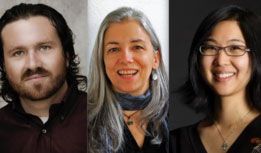 In this new program, Marginalia explores the instrumental and vocal repertoire preserved in the Chansonnier du Roi, an important source for French music of the thirteenth century. Included are songs by troubadour Bernart de Ventadorn and trouvere Gace Brulé, as well as the estampie royals and other instrumental dances.
In this new program, Marginalia explores the instrumental and vocal repertoire preserved in the Chansonnier du Roi, an important source for French music of the thirteenth century. Included are songs by troubadour Bernart de Ventadorn and trouvere Gace Brulé, as well as the estampie royals and other instrumental dances.
Dongmyung Ahn - rebec, vielle
Christa Patton - harp, bagpipe, pipe and tabor
Peter Walker - bagpipe, voice
Patrick Walker - hurdy gurdy
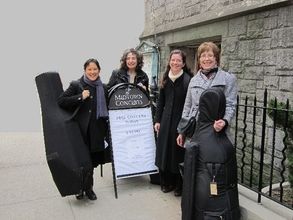 Vita Wallace, violin
Vita Wallace, violin
Beverly Au, pardessus de viole
Lisa Terry, basse de viole
with Rosamund Morley, pardessus de viole
Deborah Fox, theorbe
The Lyra Consort continues its exploration of rare jewels of French baroque, highlighting the pardessus de viole in a brand new program of lyra viol solos, sonatas, pardessus duos and trio sonatas, by Leclair, Dubuisson, Blavet, de la Guerre, and Corelli, whose Italian music was wildly popular in France.
Read more: May 25, 2017 The Lyra Consort - Rare Jewels of the French Baroque Pt. 2
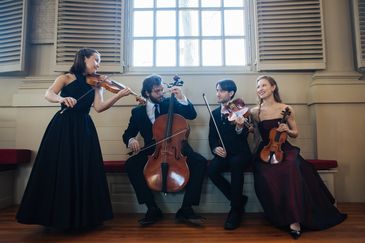 Join Diderot String Quartet for an afternoon of Mozartean delight! This program features selections from KV 387 and KV 575, two sunny pieces that are among Mozart's most famous and beloved quartets.
Join Diderot String Quartet for an afternoon of Mozartean delight! This program features selections from KV 387 and KV 575, two sunny pieces that are among Mozart's most famous and beloved quartets.
Adriane Post, violin
Johanna Novom, violin
Kyle Miller, viola
Paul Dwyer, cello
Read more: May 11, 2017 Diderot String Quartet - Purely Mozart
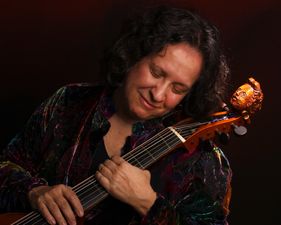 A program of intriguing Ayres, Suites, Divisions and Dances by Locke, Jenkins, Dowland and Young (including the 21st century premiere of Jenkins' trios for three trebles).
A program of intriguing Ayres, Suites, Divisions and Dances by Locke, Jenkins, Dowland and Young (including the 21st century premiere of Jenkins' trios for three trebles).
Tina Chancey, 5 and 6-string pardessus de viole, treble
John Mark Rozendaal, viola da gamba
Loren Ludwing, viola da gamba
Arnie Tanimoto, viola da gamba
Adam Cockerham, theorbo
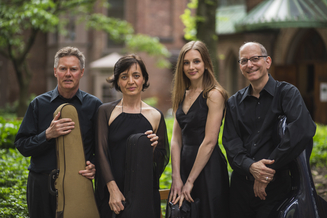
Judson Griffin, violin
Margaret Ziemnicka, violin
Marie Daniels, viola
David Bakamjian, cello
Read more: April 20, 2017 New York Classical Quartet - Boccherini's First and Last String Quartets
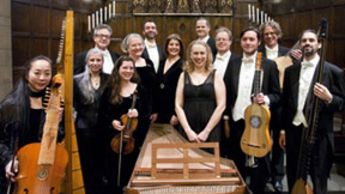 Music for Holy Week for sopranos and basso continuo from the French baroque tradition, as part of the Midtown Concerts series. Repertoire includes the Miserere of Michel-Richard Delalande, and the Stabat Mater of Charpentier.
Music for Holy Week for sopranos and basso continuo from the French baroque tradition, as part of the Midtown Concerts series. Repertoire includes the Miserere of Michel-Richard Delalande, and the Stabat Mater of Charpentier.
Rebecca Mariman, soprano
Juli Borst, mezzo-soprano
Motomi Igarashi, viola da gamba
Gwendolyn Toth, organ.
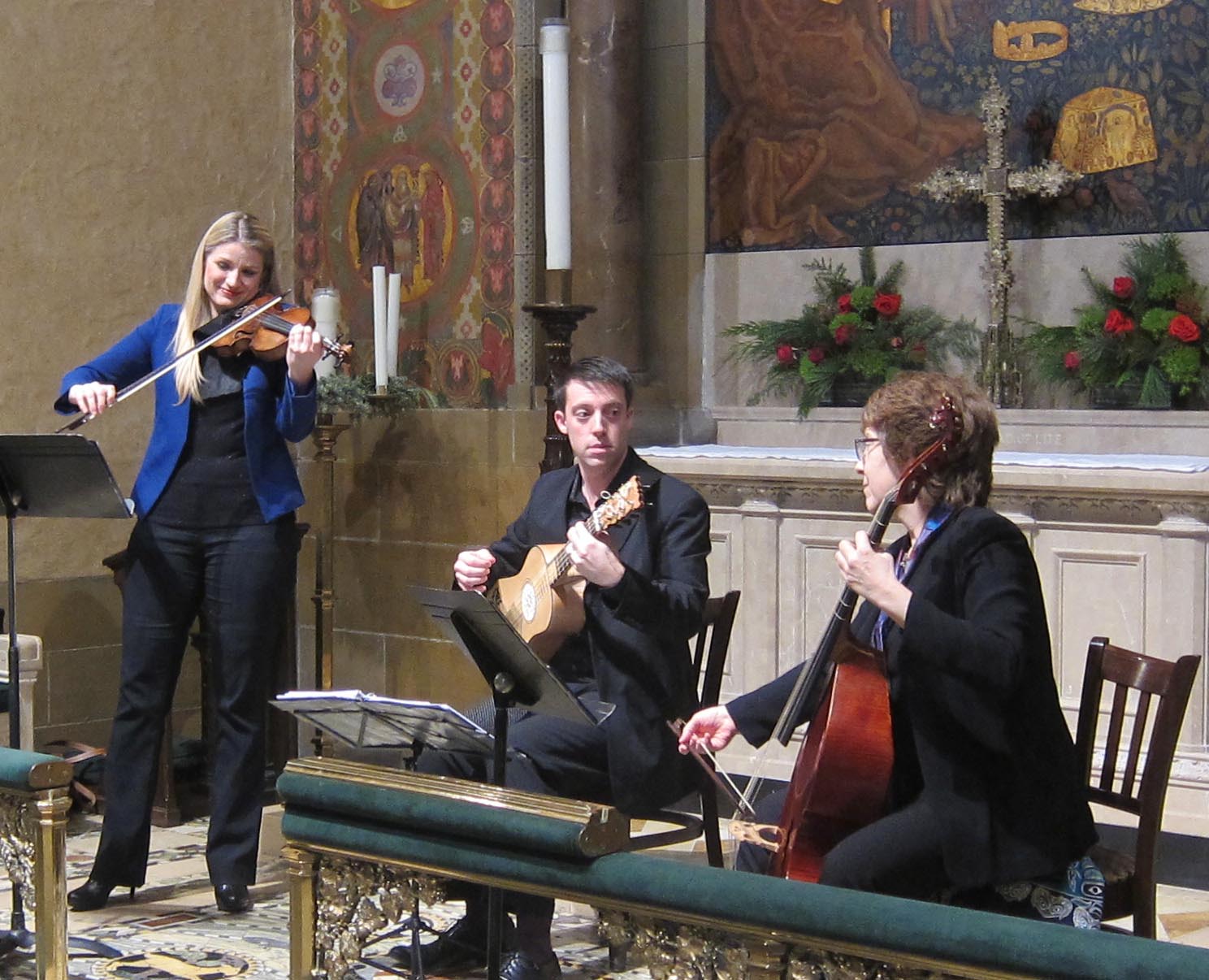
The Musicians of BALAM met in 2015 when they were brought together by Carlos Fittante of BALAM Dance Theatre to prepare a concert in this venue. A second concert by BALAM and the Musicians was presented this past January, and now the Musicians are appearing in their first outing without the dance – although everything about the dance and spirit of BALAM infuses their presentation. Sonatas for Spring features seasonal works for strings composed by Corelli, Marini, Marais, Buxtehude, de Visée, and Castello.
The Musicians of BALAM
Maureen Murchie, violin
Lisa Terry, viola da gamba
Adam Cockerham, theorbo
Note: This is a change in program from the previously scheduled concert which appears in the brochure.
Schedule change: We regret that Black Marble Duo has had to cancel their appearance. Following his enthusiastic reception this past fall, harpsichordist Gavin Black has agreed to a return engagement on this date. Please click for more information.
This coming Thursday, March 30th, Gavin Black returns to the series with a program of toccatas, suites, and variations by Froberger and Buxtehude on a Keith Hill German-style double-manual harpsichord.
Gavin Black is Director of the Princeton Early Keyboard Center, where he teaches harpsichord, clavichord, organ, and continuo playing. He has recorded organ and harpsichord music of Bach, Buxtehude, Sweelinck, Frescobaldi, Pachelbel, and others for MHS, PGM, and Centaur. He is an active recitalist mainly in the Northeast.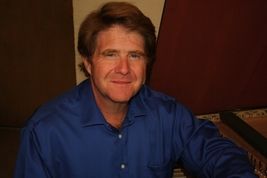
 Venice was an epicenter of artistic and musical creativity in the 17th century. Its thriving musical venues ranged from Europe´s first public opera houses and scholarly academies to religious institutions such as San Marco. The composers on the program today lived and worked for at least some time in Venice.
Venice was an epicenter of artistic and musical creativity in the 17th century. Its thriving musical venues ranged from Europe´s first public opera houses and scholarly academies to religious institutions such as San Marco. The composers on the program today lived and worked for at least some time in Venice.
Claire Smith Bermingham, Baroque Violin
Dan McCarthy, Baroque Violin
Margret Hjaltested, Baroque Viola
Anneke Schaul-Yoder, Baroque Cello
Aya Hamada, Harpsichord
Read more: March 23, 2017 The Queens Consort - Venetian Masters
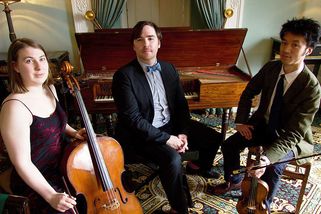 During the 18th-century, Britain experienced a rapid expansion in their influence throughout the globe. Join us as we explore the ways that composers commemorated the exploits of a rising superpower. At times fervent, kitschy, and sentimental, these pieces capture the spirit of a nation.
During the 18th-century, Britain experienced a rapid expansion in their influence throughout the globe. Join us as we explore the ways that composers commemorated the exploits of a rising superpower. At times fervent, kitschy, and sentimental, these pieces capture the spirit of a nation.
Francis Liu, violin
Sarah Stone, cello
Patrick Jones, square piano
Sam Budish, percussion
Read more: March 9, 2017 Broadwood Junction - Rule Britannia!
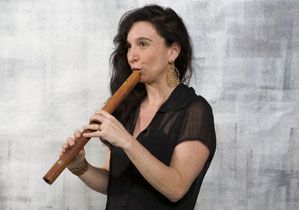 Highlights of the Italian Baroque instrumental repertory, including some of the earliest examples of the sonata by Giovanni Battista Fontana and Dario Castello, Corelli's famous Follia variations and the virtuosic trio in a minor for recorder, obbligato bassoon and basso continuo.
Highlights of the Italian Baroque instrumental repertory, including some of the earliest examples of the sonata by Giovanni Battista Fontana and Dario Castello, Corelli's famous Follia variations and the virtuosic trio in a minor for recorder, obbligato bassoon and basso continuo.
Nina Stern, recorders
Jeffrey Grossman, harpsichord
Stephanie Corwin, bassoon
Read more: March 2, 2017 Nina Stern, with Jeffrey Grossman & Stephanie Corwin - Italian Jewels

Grand Harmonie promotes period-instrument artistry in the United States through inventive, compelling performances of Classical and Romantic repertoire and educational outreach to listeners of all ages and backgrounds.
“...these guys sounded lusty and rhythmic and rustic; theirs was early music with a stomp…” Thomas Garvey, Hub Review, 2014
Sarah Paysnick, Flute
Kristin Olson, Oboe
Thomas Carroll, Clarinet
Clay Zeller-Townson, Bassoon
Yoni Kahn, Horn



